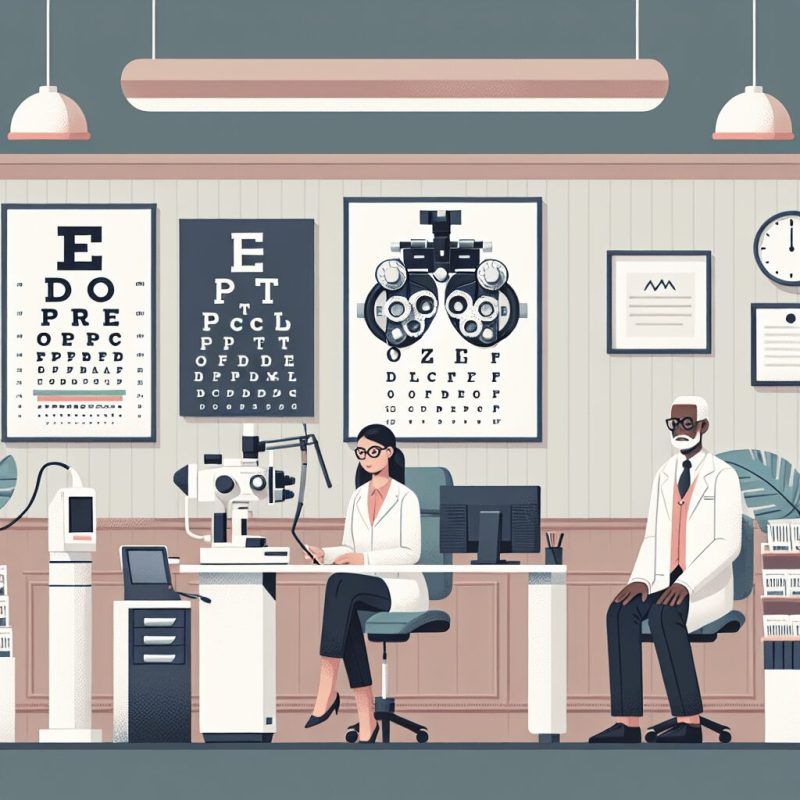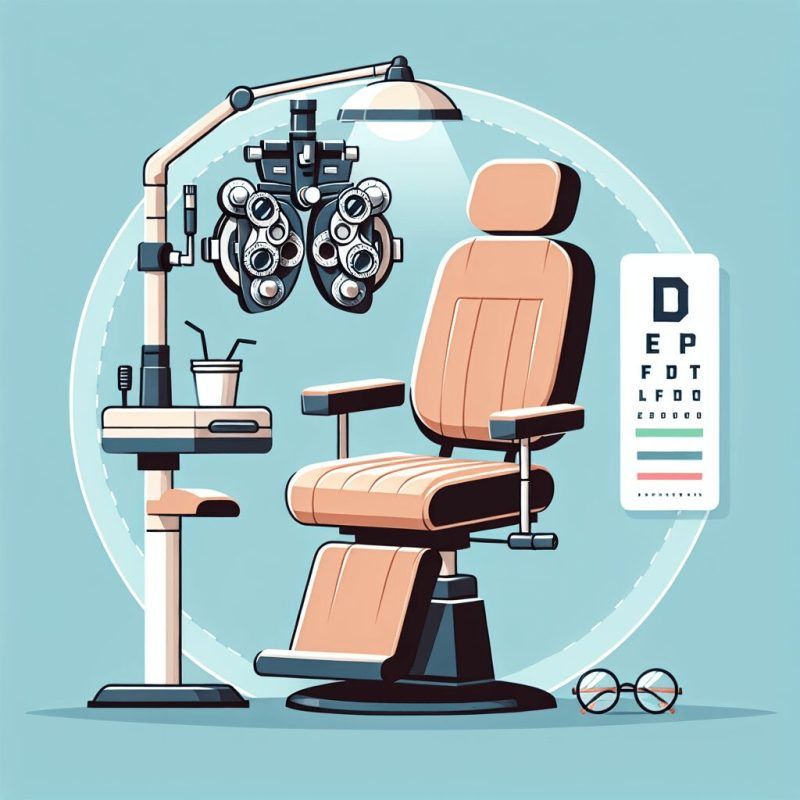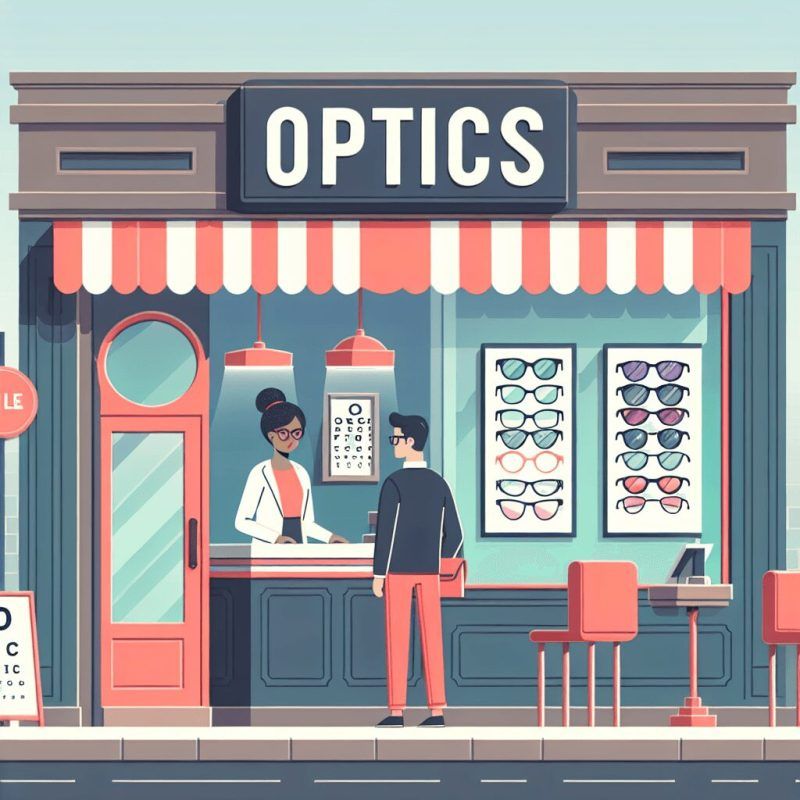Doctor's Corner
Why Do My Eyes Feel Pressure and Dizziness?
Have you ever experienced pressure in your eyes and dizziness? This can make it difficult to focus or stay balanced. These symptoms could be indications of a condition known as Binocular Vision Dysfunction (BVD). Approximately 20% of people in the U.S. experience this. BVD occurs when the eyes are not aligned properly, leading to discomfort such as eye strain, headaches, and vertigo. Understanding how vision problems are connected to dizziness is crucial for identifying the right treatment to alleviate these troublesome symptoms.
Common Causes of Eye Pressure and Dizziness
Migraine
Migraine symptoms are easy to spot. People might feel intense head pressure, get dizzy, feel nauseous, or see visual disturbances like aura.
Migraines are different from other headaches. They come with sensory sensitivities, such as sensitivity to light, sound, or smells, and can last for hours to days.
Diagnosing migraines involves looking into a person’s medical history, symptoms, and ruling out other causes of headaches with a physical exam and sometimes imaging tests.
Treatment for migraines focuses on managing symptoms and preventing future episodes. This can involve prescription medications, lifestyle changes, stress management techniques, and avoiding triggers like certain foods.
Getting advice from a healthcare provider like an eye doctor or optometrist can help create a personalized migraine management plan.
Sinusitis
Sinusitis can cause various symptoms like dizziness, head pressure, nausea, and headaches.
These symptoms can affect vision and balance due to the connection between the eyes and the vestibular system.
Misalignment between the eyes may occur, leading to visual distortions, gaze instability, vertigo, and dizziness.
To diagnose sinusitis effectively, it’s important to see an eye doctor for a thorough examination of eye muscle function, realignment, and eye strain.
Treatment options may include prescription medications, aligning lenses for realignment, and neuro-optometric rehabilitation therapy to improve vision and balance.
Promptly addressing sinusitis is crucial to prevent complications that could worsen vision and symptoms of dizziness and imbalance.
Seeking timely medical attention for sinusitis can help relieve head pressure, decrease dizziness, and enhance overall visual and vestibular orientation.
Tension Headache
Common symptoms of a tension headache include head pressure, dizziness, nausea, and eye strain.
These symptoms can be caused by various factors such as misalignment of the eyes, vision problems , and balance issues.
To effectively diagnose and treat tension headaches, individuals may need to consult an eye doctor or healthcare professional for a comprehensive evaluation.
Treatment options may involve realignment of the eyes using aligning lenses, prescription glasses, or neuro-optometric rehabilitation therapy.
Preventive measures for managing tension headaches may include stress reduction techniques, eye exercises to improve gaze stability and orientation, and dietary changes to support overall eye health.
Seeking timely medical attention for persistent symptoms like balance problems, double vision, or vision loss is crucial in addressing underlying conditions like binocular vision dysfunction, allergies, ear infections, or high blood pressure, which can contribute to tension headaches.
Regular eye check-ups and appointments with specialists can help individuals monitor and manage their vision-related symptoms effectively.
Impact of Vision Problems on Eye Pressure and Dizziness
Binocular Vision Dysfunction
Common symptoms of Binocular Vision Dysfunction:
-
Eye strain
-
Vertigo
-
Headaches
-
Nausea
-
Difficulty focusing the eyes
These symptoms can overlap with balance problems and dizziness, showing a link between the eyes and the vestibular system.
To diagnose BVD, a comprehensive eye exam by an eye doctor is needed. Treatment often involves using aligning lenses to fix eye misalignment and ease symptoms.
Preventive steps for managing BVD include:
-
Maintaining proper eye alignment
-
Addressing underlying conditions like high blood pressure or allergies that can worsen vision problems
Getting professional help and following the eye doctor’s advice are important in effectively dealing with Binocular Vision Dysfunction and preventing long-term vision issues.
Eye Strain
Eye strain can result from vision problems like binocular vision dysfunction, misalignment of the eyes, and visual system issues. Problems such as double vision, visual distortions, cataracts, macular degeneration , retinal detachment, and glaucoma can also cause eye strain. Symptoms may include dizziness, nausea, headaches, and vertigo as the eye muscles work extra hard to focus due to compromised vision.
To reduce eye strain:
-
Schedule an eye exam to detect and address vision problems early.
-
Take breaks from screens and follow the 20-20-20 rule.
-
Adjust lighting and maintain proper posture.
-
Practice gaze stability and orientation exercises for better eye health.
Symptoms Associated with Eyes Pressure and Dizziness
Dizziness and Vertigo
If you’re feeling dizzy or experiencing vertigo symptoms, it’s important to identify triggers or patterns linked to these episodes.
Symptoms like nausea, headaches, or vertigo can indicate underlying conditions such as BVD, migraines, allergies, or high blood pressure, so it’s essential to pay attention to any vision issues, eye misalignment, or balance problems you may have.
Vision problems can greatly affect dizziness by impacting gaze stability and orientation, so consulting with an eye doctor to address issues like visual vertigo, realign eye muscles, or undergo neuro-optometric rehabilitation if required, is advisable.
Head injuries, vision changes, sinusitis, or ear infections can also contribute to dizziness. Seeking professional help is crucial in such cases to ensure proper management of your symptoms.
Addressing vision-related problems, whether through aligning lenses, prescription glasses, or vision dysfunction therapy, can help reduce dizziness and balance issues, ultimately improving your overall well-being and quality of life.
Head Pressure
Head pressure can be caused by various conditions like migraines, allergies, sinusitis, or tension headaches. Symptoms include dizziness, balance issues, and visual disturbances. Vision problems, like binocular vision dysfunction or eye strain, can also contribute to this pressure. Seeking help from an eye doctor for issues like cataracts or glaucoma is important to manage vision-related problems that worsen head pressure.
Neuro-optometric therapy can help in realigning eye muscles and improving gaze stability to alleviate symptoms.
Balance Problems
If you have been feeling dizzy, having headaches, or feeling nauseous, along with problems with balance, it might be due to a condition called Binocular Vision Dysfunction. BVD is caused by misalignment between the eyes, which can result in symptoms such as eye strain, vertigo, headaches, and nausea.
Treatment for BVD involves using specialized aligning lenses to correct the misalignment and relieve these symptoms. Other factors like visual vertigo, eye strain, and different vision issues can also contribute to feelings of dizziness and balance problems.
The connection between your eyes and the vestibular system is important for maintaining balance. Symptoms like vertigo, lightheadedness, difficulty focusing your eyes, and issues with balance and coordination could be a sign of vision-related problems affecting your balance.
It’s important to seek help from an eye doctor for a proper diagnosis and the right treatment to effectively address these issues.
Diagnosis and Treatment for Eye Pressure and Dizziness
Identifying Underlying Problems
Underlying medical conditions, such as migraine, allergies, sinusitis, ear infections, high blood pressure, and intracranial hypertension, can lead to symptoms of eye pressure and dizziness. Factors like misalignment between the eyes, binocular vision dysfunction, and balance issues can also contribute to these symptoms.
Differentiating between these underlying problems involves considering symptoms like vertigo, lightheadedness, eye strain, and difficulties with balance. Consulting an eye doctor to assess the alignment of the eyes, check for conditions like glaucoma, cataracts, or macular degeneration, and evaluate the functioning of the visual system is important.
Mentioning all symptoms experienced, such as nausea, headaches, and visual distortions, during the appointment can help in accurately diagnosing the root cause. Seeking professional help for a comprehensive examination and discussing treatment options like aligning lenses, prescription glasses, or neuro-optometric rehabilitation is essential in addressing the underlying issues leading to eye pressure and dizziness.
Treatment Options
Treatment options for managing eye pressure and dizziness include:
-
Prescription glasses
-
Prism glasses
-
Medications
-
Dietary changes
-
Home remedies like the Epley maneuver
-
Supplements like vitamin D and calcium.
These treatments aim to alleviate symptoms related to vision problems, balance issues, and vertigo, which can contribute to feelings of dizziness.
Addressing underlying causes such as Binocular Vision Dysfunction, eye strain, or misalignment between the eyes can help individuals effectively manage their symptoms and improve their overall well-being.
Seeking professional guidance from an eye doctor or healthcare provider is important in determining the most appropriate treatment options for eye pressure and dizziness.
A thorough evaluation and diagnosis by a professional can help tailor the treatment plan to the individual’s specific needs, whether the symptoms are due to conditions like balance problems, blood pressure issues, or vision dysfunction.
Scheduling an appointment and discussing any concerns regarding dizziness, balance, or vision changes is essential to receive the necessary care and support for optimal management of these symptoms.
Managing Symptoms
To manage symptoms of eye pressure and dizziness, consider these strategies:
-
Address underlying conditions like migraine, allergies, sinusitis, high blood pressure, or vision dysfunction.
-
Treat eye muscle alignment with aligning lenses or prescription glasses to reduce strain and balance issues causing dizziness.
-
Seek guidance from an eye doctor or healthcare professional to identify the root cause.
-
Discuss symptoms and undergo evaluations to receive appropriate treatment like medications or vision therapy.
-
Make lifestyle changes to manage blood pressure levels.
-
Regular appointments with healthcare providers can improve overall vision health.
Professional Guidance
Individuals experiencing eye pressure and dizziness symptoms can benefit from scheduling an appointment with an eye doctor. Through a thorough examination, the doctor can assess vision problems, eye muscle function, gaze stability, and orientation. These factors may contribute to dizziness and balance issues.
In cases of misalignment or binocular vision dysfunction, the eye doctor can prescribe aligning lenses or neuro-optometric rehabilitation to address the problem. Seeking professional guidance is important because it helps identify underlying problems such as migraines, vertigo, high or low blood pressure issues, ear infections, or allergies that could be causing head pressure and dizziness.
Furthermore, a doctor can rule out serious conditions like macular degeneration, retinal detachment, glaucoma, or intracranial hypertension, which might present as dizziness. By discussing symptoms like nausea, headaches, double vision, or visual distortions during the appointment, individuals can get an accurate diagnosis and appropriate treatment to alleviate eye pressure and dizziness.
Preventive Measures for Eye Pressure and Dizziness
To prevent eye pressure and dizziness, it’s helpful to make some lifestyle changes. Here are some simple tips:
-
Manage stress levels
-
Maintain a healthy diet with antioxidants
-
Stay hydrated
Make sure to have regular eye exams to catch any vision problems early. Some specific exercises, like gaze stability and orientation exercises, can also reduce the risk of eye pressure and dizziness symptoms.
Developing healthy habits such as taking breaks from screens, practicing good posture, and having good lighting can help prevent these issues. Treating conditions like allergies, sinusitis, and high blood pressure promptly can also lower the chances of experiencing symptoms related to eye pressure and dizziness.
It’s essential to consult with an eye doctor for any misaligned eye muscles or vision problems. Regular appointments can address potential issues like binocular vision dysfunction, migraines, and vision loss, reducing the risk of dizziness and head pressure.
FAQ
What are the common causes of pressure and dizziness in the eyes?
Common causes of pressure and dizziness in the eyes include eye strain from staring at screens for extended periods, dehydration, lack of sleep, and high blood pressure. Taking breaks from screen time, staying hydrated, getting enough rest, and managing blood pressure levels can help alleviate these symptoms.
Can eye strain cause pressure and dizziness?
Yes, eye strain can cause pressure and dizziness. Taking breaks from screens, adjusting lighting, and staying hydrated can help alleviate symptoms. Eye exercises and getting regular eye exams can also improve eye health and reduce strain.
How does sinus congestion relate to pressure and dizziness in the eyes?
Sinus congestion can lead to pressure around the eyes, causing dizziness. To alleviate symptoms, try using a nasal decongestant or saline nasal spray. Applying a warm compress over the eyes can also help relieve pressure.
Are there any underlying health conditions that could contribute to these symptoms?
Yes, underlying health conditions such as diabetes, thyroid disorders, or autoimmune diseases could contribute to these symptoms. A medical evaluation is necessary to determine the root cause.
When should I seek medical attention for pressure and dizziness in my eyes?
You should seek medical attention for pressure and dizziness in your eyes if the symptoms are severe, persistent, or accompanied by other concerning symptoms such as vision changes, eye pain, or headache.
Experiencing eye pressure and dizziness can be concerning. Don’t ignore these symptoms—schedule a consultation at Superior Eye Care in The Woodlands or Quality Eye Care in Willowbrook, Texas. Our experts will conduct a thorough examination to identify the cause and provide effective treatment options.
The post Why Do My Eyes Feel Pressure and Dizziness? first appeared on Optometrist in Woodlands & Willowbrook TX.
Doctor's Corner





